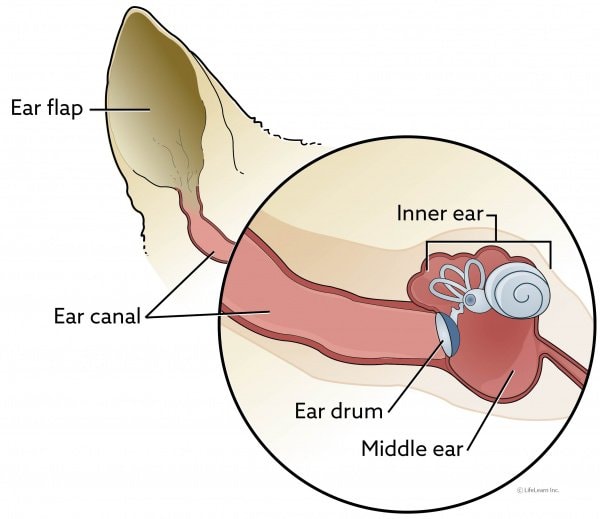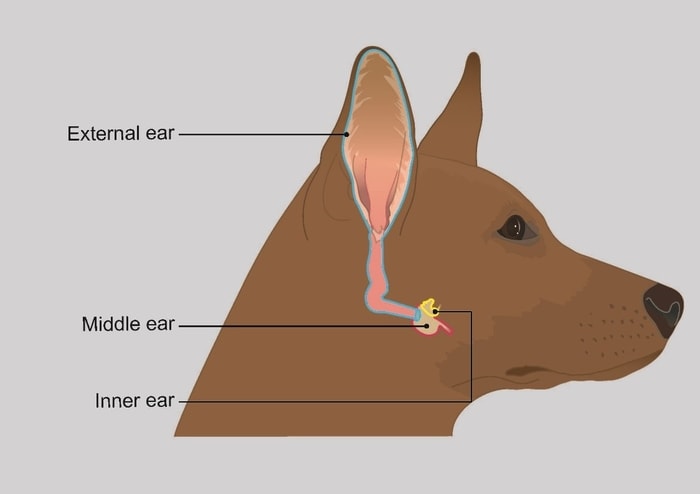The vestibular system is an essential system of the dog’s body. The system lies in the dog’s brain and the outer part located in the internal and middle ears. The vestibular system of the dog maintains the balance of the body. The system’s main component is the vestibular nerve that maintains the coordination of legs, body, eyes, and ears thats why the dog does not fall during walking. The vestibular disease in dogs is manifested by losing balance during walking, rolling, eyes wobbling, and animals falling.
What is Vestibular disease in dogs?
Vestibular disease in dogs is a non-progressive, sudden loss of balance of the body of animals. The disease is mainly seen in older dogs than young dogs. The disease is also called canine idiopathic vestibular syndrome or vestibular syndrome.

Causes of Vestibular Syndrome in Dogs
The disease is mainly seen in older dogs though all aged dogs can be affected by the syndrome. The German Shepherd and Doberman Pinscher dog breeds are more vulnerable to the disease than other breeds. There are numerous causes of the diseases are:
- An ear infection enters into the middle or inner layers of the ear.
- Mechanical Trauma.
- Hypothyroidism in dogs.
- Perforation of the eardrum.
- Effects of certain antibiotics.
- Tumors in the ear and brain.
- Inflammation of vestibulo-cochlear nerve.
- Brain stroke.
- Deficiency of thiamine.
- Encephalitis.

Clinical Signs of Vestibular Disease in Dogs
In most cases, the vestibular syndrome onset suddenly. The most prominent clinical signs are:
- Lack of balance during walking.
- Head tilt that is rotating the head one side of the ears.
- Nystagmus or rotating the eyeball left to right and ups to down.
- General wobbling is an animal drifting one side and moves to another side.
- Nausea or vomiting.
- Incoordination during walking.
- Loss of hearing.
- Paralysis of facial muscle causes abnormal face and drolling of saliva.
- Weakness.
- Seizures.
- Loss of vision.
- Loss of appetite.

Diagnosis of Canine Vestibular Syndrome
As a pet owner, you suspect the disease in your lovely dog. However, many diseases have similar clinical signs. The methods of diagnosis of the disease are:
- Examination of the nerves of ears, vision, and hearing.
- History of trauma, diseases, antibiotic therapy, breed, age, and recent activities will help you diagnose.
- Examination of external and internal ear for any infection.
- Radiographic examination of the brain, especially ears.
- CT scan of the brain.
- MRI.
- Examination of Cerebrospinal fluid (CSF).

Treatment of Vestibular Disease in Dogs
The treatment of vestibular syndrome is mainly the treatment of the underlying causes of the disease. The usual treatment protocols are:
- Antibiotics in there are any inflammation or infection in the ears.
- Antihistamines drugs.
- Fluid therapy.
- Vitamin B1 or thiamine injection.
- Anti-vomiting drugs in case of nausea.
- Drugs that reduce motion sickness may be used.

Prevention and Care of Canine Vestibular Syndrome
The disease is more severe within the first 48 hours after onset. If you identify the underlying causes at the proper time, most animals recover within 3-4 weeks. Some animals may carry the wobbling signs throughout their life. You must provide balanced food and clean water to your pet. You must keep continuous monitoring of your pet after recovery. Provide good beddings and remove any hard materials from its house.